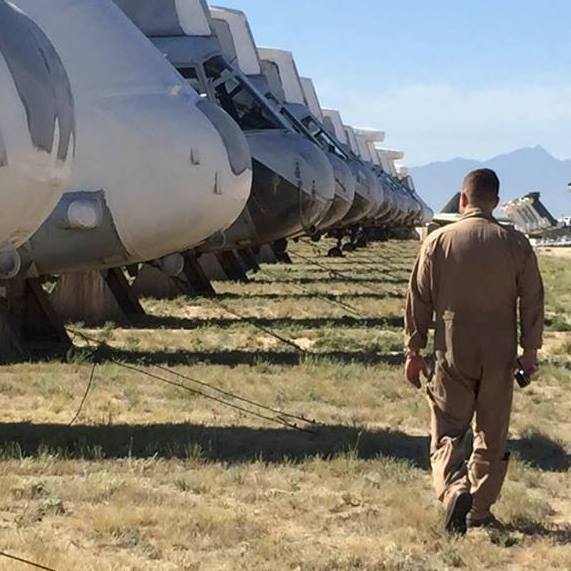I decided to spin up Home Assistant on a VM on my server yesterday, and so far I’m not having much luck getting to to much that is actually useful.
I’m wondering if it’s me doing something wrong, but I can’t see what that would be.
I’ve signed up for the free trial of the cloud services which all seems to have gone fine, and I have a couple of integrations working (Roomba, printer ink levels, Sonos and a couple of others) but mostly everything else I’ve tried just doesn’t want to play ball
-
Apple TV - won’t pair - I press the pair button in HA but the ATV doesn’t respond with a pairing code
-
Ring doorbell / cameras - these are found but won’t display a live feed
-
Ring alarm - not recognised at all
-
Netatmo thermostat - widget displays but doesn’t sync correctly with thermostat and if I try to adjust temp it sets the target temp to 137 degrees C
-
Hue lights - having issues but this one might be my hub not HA
I was really hoping I could set up automations to, say, turn off my TV, turn off the lights, arm my house alarm - all with one press of a button but it looks like currently this isn’t going to happen.
Is it just me? Am I doing something wrong perhaps? Maybe I’m missing something obvious but it just seems like the integrations with these devices just isn’t quite there? I’d really be interested in other people’s experiences and whether they were able to solve these issues (if indeed they had them at all).
I’d guess that it might be related to how you’ve set up the virtual network adapter. This depends on the specifc virtualization software you use, but the adapter for HA should be be set to something called bridged network, meaning the VM gets its own IP on your home network, no routing or NAT in between. HA will struggle to connect with devices otherwise, as all these protocols weren’t designed to work across multiple networks.
I’ll double check but pretty sure all my VMs are set to use bridged mode (I use proxmox which I think does this by default).
Yeah to echo other comments in here, it sounds like there’s some kind of config issue somewhere. The hue integration should “just work” and it’s where I get most of my own utility from.
I will say though, HA isn’t as user friendly as it could be. It has come a long way and it’s getting better (and there is definitely nothing better at the moment), but there are still some gremlins in there that require you to hand edit config files or understand obscure device names and things like that.
I got Hue working, as I suspected it was a me issue (well a Hue Hub issue) rather than an HA issue :)
Yeah, as soon as you need to customize anything you are inside a very odd scripting system. On the other hand, in my experience, most stuff just works.
Yeah, it’s very powerful, it just needs a bit of a UX refresh.
I wish their interface was flexible and as easy to use/customise as Grafana.
HA is geared towards selfhosted, locally controlled stuff (zwave, ZigBee, mqqt, local WiFi, etc). Because the cloud and privacy invasion is the mainstream, HA may require a bit more tweaking and technical knowledge to get up and running.
With that said, once you get it to how you want it, it’s been working rock solid for me for a few years now. I’ve built my house around HA automations and can’t imagine living without it.
deleted by creator
I would have a look at your networking as I have lots of cloud services setup on my home assistant running on a pi4, without more network info it’s difficult to say where you might have issues
Install HACS, it will open up thousands of integrations and UI elements.
You probably tried to do too much in one day :)
Netatmo had a delay indeed. There is an option to get a developer account at Netatmo so changes get pushed to HA. But still, it has some quirks.
Advice is to work on one integration at a time, read the documentation, search for your problems. After the integration works, setup your dashboard. After that start with the automatons.
Good luck, HA it’s really worth it, invest a bit more time in it.
I agree with the idea of focusing on one integration at a time. I got very frustrated with HA when I first started. Then (since everyone told me how great it was), I started trying just to get one thing working. After I did, I moved on to the next. Now, I’m your typical HA fan boy.
I’ll keep plugging away. Useful to know Netatmo can be a bit sketchy at least.
It’s a feature not a bug. A feature to maximize profits for of the vendors that create your hardware that is.
For vendors a so called vendor lock-in is a great way to make money. Unfortunately they have an incentive to make their stuff not work well with other stuff because that may mean that you’ll buy more of their stuff.
Now, in some cases they have to implement compatibility, because otherwise they’d have trouble getting customers int he first place, but in it’s often obvious that playing well with others isn’t a priority.
Hence solutions like home assistant rely on shoddy interfaces and that shows in the form of issues. Besides, it’s a volunteer driven application. You can’t expect the people who make it in their free time solve all the problems for you.
Edit: Basically, you will have to solve these issues step by step. Afaik they are all solvable. And of course you might want to rely on hardware that’s more standardized. E.g. onvif cameras. That’s not necessarily less of a hassle than with ring etc. but it’s cheaper.
I have similar experiences. Everything seems extremely clunky and pseudo-simple. Some very basic features are utterly impossible, for most things you have to write config by hand and there’s absolutely zero guidance.
To me, HA looks like a legacy enterprise project, that only works if you just happen to follow exactly the path someone had in mind when building it plus a bunch of half baked add-ons, where it seems like the maintainers lost interest after a while.
In my experience, HA is simply a fuck-you to all those companies that want you to use their closed, cloud-based solution.
It’s not perfect, but it’s basically all we got, unless you want the crappier experience of being forced to buy only one brand of things and being forced to use really, really simple automations.
If HA is the “answer”, then vendor locked solutions don’t look that bad in comparison.
Xiaomis cloud might stop working in two years, but HA is already not working today. That’s not really appealing.
The HA android app just passed one million active devices. Saying “Ha is already not working today.” might be true for you but it’s obviously not true across the board.
Absolutely wrong. I have dozens of devices integrated, from a lot of brands, all working. You can of course try to get a turnkey solution from like Loxone, but be prepared to pay thousands of dollars, and good luck adding anything that’s not in their ecosystem. And there’s a lot of that. And what is there is all pretty outdated.
Xiaomi is great and I use a lot of their stuff, but the options for automation are severely limited.
Can you give some examples? That has not been my experience at all.
Sure.
My setup here is pretty simple: a handful of temp/humidity sensors that push their readings to an MQTT queue, which then is read by Telegraf an written to InfluxDB. Optional complexity: I would prefer these sensors to delay the acutal send events, so they can push a batch of readings in one go.
Now, ideally HA would be able to read the data from Influx as a sensor and even import the history. I tried the Influx integration, was told to configure that in the config files and literally for days I tried to get everything to work, but it just would not work. I can’t even list the different error messages here, it’s been a few weeks, but the consensus seems to be, that Influx is essentially not readable for HA for reasons. Like, there’s no error message that I could make sense of, it’s just generalFuckYouError 5446.
Ok, then maybe I can read the measuements directly from MQTT? I would have duplicated data, but I can always delete old data in HA, so that’s ok. All my sensors currently write in the same topic and each message contains the sensor name, a timestamp and two measurements. That data structure however is utterly unreadable in for HA. Obviously, I need to split the messages into different (HA-)sensors based on the sensor name field and then differentiate between the different sensor values (humidity/temp). That is not possible. Like, it is completely not supported and the official stance is to put a bunch of MQTT listeners for each sensor/value pair in your config and then filter the messages based on sensor name and reading. Well, that’s really convenient! Especially for the completely outlandish case, that someone might want to automatically add new sensors.
But ok, I played ball. I set up two testsensors (so four listeners in total). And it kind of worked. Until I noticed, that each message is processed once, which is perfectly in line with MQTT semantics, but it meant that messages that didn’t fit the listener they happened to collide with were just dropped. Awesome!
But ok, next try, I’ve got Telegraf, that thing can probably help out. So I created new topics for each sensor and value, in a nice hierarchy and created a bunch of HA listeners, each having its very own topic.
And that finally kind of worked. I still can’t batch-import messages, because HA ignores MQTT timestamps, I still can’t dynamically add new sensors, I still can’t “fuse” sensors belonging together (hum/temp do kind of correlate, after all), etc. etc.
My case isn’t really unusual and not really complicated, yet it took me literally weeks to get to this point and it’s still a clunky, semi-functional clusterfuck, whos only benefit compared to Influx is, that it has an Android app.
Disclaimer: I might mixed some thing up in the description above, it’s been a while. And I’m certain I could make some things nicer, but that’s not the point. I’m a senior software developer and can’t get this pile of Python to run. Maybe I’m really stupid, but I’d say HA is the culprit here.
You spent four paragraphs describing your unusual and unique set up and then asserted that your setup isn’t actual either of those things. I think you just don’t realize how out of the norm your requirements are.
What exactly?
Seriously, reading data from Influx isn’t unusual, it’s kind of the whole point of a database to be read from. And sensor data kind of represent a time series. There even is an official plugin, it just doesn’t work right.
What you seem to conveniently ignore is that I’m starting at two very simple points. And all those paragraphs are just attempts to make one of those work. That’s it.
And again, this is exactly the attitude I’m referring to. Oh that is totally weird. That can’t work, obviously!
Why? Why does the very simple use case to read data from a db not work?
Looks like an user error to me. Influx is for long-term storage of history and data, you don’t need it for automation at all.
Looks like this is not up to you to decide.
If you would have read my comment, you would have noticed, that I intend to use Influx as a long term DB and use HA as automation around that. BTW: The thinking you’re showing here is exactly what I’m criticizing. You think that DBs and automation have no connection, so you decide, that I am the idiot for even trying. This is literally what I’ve described above.
Also, I wrote quite a paragraph about the fact that I already accepted the idea to ditch the direct Influx integration.
So you use the free thing wrong, don’t RTFM, vent on internet and then vent some more when corrected? What’s your end game?
Nobody corrected me at all. It’s just “yeah because u stoopid”.
I did read the manual. I did search for solutions and tried different approaches. And I documented that above. You seem to ignore that.
Why do I vent here? Because that’s the question of the fucking post! Read the post! That’s exactly the question.
Why do you have to be so stubborn? Can’t your accept, that maybe, just maybe, HA isn’t directly sent from God? Is HA your religion? Does that religion prescribe only skimming comments and just reacting on keywords to rile yourself up?
Seriously, this pointless, self-righteous arrogance is the reason so many people hate “nerds”. This entire thread here is basically the “well ackshually” meme in text form. Reflect a bit in what you’re doing here.
Thanks for elaborating. While I think that is a far cry from “some very basic features” being “utterly impossible”, I see the point, but I disagree that this a common experience.
HA is meant as the central point in home automation, meaning it is consuming sensor data, automating actors and showing everything on its dashboards. Following that philosophy, long term storage is meant to be written to by HA, but not consumed from there.
Then you are also running a very non-standard MQTT setup that does not conform to the usual conventions. If it were, you could make use of the autodetection capabilities and make sensors (and actors!) work very easily with HA/MQTT. I played around with this myself in a little toy project which I use to control my linux machine via MQTT and this worked wonderfully.
I’d argue you are very far away from a typical use case and naturally you will run into problems making it work. That’s FOSS software for you, you can try to work around it, you can work on the missing features yourself or you can leave it. But it’s not fair to pretend your very special use case is some kind of measure of the project’s quality. People have built amazing things with HA, far from “exactly the path someone had in mind”.
Sounds super weird to me. I haven’t had any problems at all, but I run it on a RPi rather than a VM.
Do you use it as a docker container or the full Home Assistant OS?
I want to get it to play around but cannot really justify buying a separate raspberry pi jhst for HA?
I do all docker containers on a pi3, running on USB Stick as drive
Awesome thanks. Thats pretty much my setup so Ill definitely give it a go
I ran it in Docker initially and it’s annoying because you can’t use HACS, which brings in a lot of custom integrations and features. You also can’t use any addons that spin up containers either. I ended up getting a thin client and running it on there in a VM.
You can use HACS in Docker. I definitely had that working in Docker before I moved to Home Assistant OS on a dedicated machine. You’re right about add-ons though, maybe you had the two confused?
Eh, I’m not sure tbh, it was too much of a pain to do and the pi3 wasn’t powerful enough to handle it either so I moved to a VM on Debian.
My add-ons are in containers. EspHome, Node Red, PiHole, zigbee2mqtt, mosquito etc
How do you go about integrating it with HA?
I installed them via HA add-ons, so they appear within integrations etc. The wiring of logic I do mainly in node-red, with HA just being a pretty frontend with buttons and cards essentially.
I just run HAOS on the hardware, yeah. Have considered making it a container on my main home server, but I have the RPi and I just want my home assistant to work. My home server is more of a tinker project so it’s nice to keep them separate.
I wrote a response with links and stuff but it wouldn’t submit… anyway read the integration pages. Some things you are expecting don’t work, and Apple TV has a troubleshooting section.








